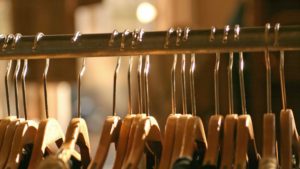
Its December and we are steamrolling into the holiday season. This is a sentimental time for all, a time for reflection and a time for celebrating. It is also a time for indulgent shopping. Many of you are probably in full swing having begun with the incredible deals thrusted upon us on Black Friday. I am not about to stand on a pulpit and tell you how much and what to buy, but I do ask that you take a moment of reflection to think about how much these goods are really needed and all that went into the producing them.
I have been collecting and recycling used clothes and shoes in the New York City Metro area for over a decade with my company Wearable Collections. On a daily basis we see the incredible amounts of excess that surrounds the city. While our focus is on clothing, shoes and home textiles, we have become part of the conversation in broader discussions of waste management and sustainable living. One of our missions since the inception of the company has been to raise awareness to the value of items in the wastestream. Clothing and textiles make up around 5% of the municipal waste stream nationally. While this percentage isn’t as much as materials such as food waste, plastics or paper, clothing is an item that people have a nostalgia for and in many cases remember what they paid for it. When people hand us bags directly at one of the 31 weekly greenmarkets we host collections, we are often blessed with a story of what the clothes meant to that person and how happy they are that they will be enjoyed by another person.
A lot has changed since our founding in 2004 and worldwide people have woken up to all the damage we have caused the environment. The Fashion industry is especially culpable, being dubbed the second largest polluter after Oil. An incredible amount of water is used in producing cotton and polyesters which are then dyed and bleached by harmful chemicals. All of these processes leak into waterways, according to the WHO (World Health Organization) 17-20% of all industrial water pollution resulted from textile dyeing and finishing. Fast fashion companies, with their race to provide us with the lowest prices, demand the people who actually turn these fabrics into wearable garments to work in dangerous conditions at meager pay rates. The fashion we wear to make is look so good can have a very dirty history. Does it have to be this way?
We have just gone through a vicious election cycle. Our president elect has made lots of threats about shutting down borders and penalizing companies who produce goods outside the country to sell back to Americans. While I don’t agree with a lot of his positions, the idea of producing goods locally has been on my mind for a long time. When something is produced locally, we are supporting our local community economically and also have a deeper connection to how the item was produced. How much more are we willing to pay to have a level of transparency and standards built into our consumption? Most folks would say they are willing to do so but in my discussions with fashion executives this theory doesn’t translate into purchases where pricing plays a bigger factor.
It’s easy to point the finger at corporations being profit driven pushing down costs as much as possible to move more product at higher margins. But we do have options. First of all, we have the choice of not buying. Is your friend or family member going to love you more because you showed up with that gift in hand. I am sure a giant hug will suffice. If you are compelled to buy something take a moment to think of all that went into producing that garment. In a year when we are having large debates about how votes are counted, I assure you that every purchase you make is a vote for the company you are buying from. A vote for their methods and practices of production and a vote for their future success. When kids walk into a friends house, they attack their toys with unbridled enthusiasm. Each of these toys is a new toy to them. There is a lot to take from this lesson. Yes, there is a feeling we get when receiving something new but keep in mind, something new to you could be used to others and visa versa.


RECENT COMMENTS